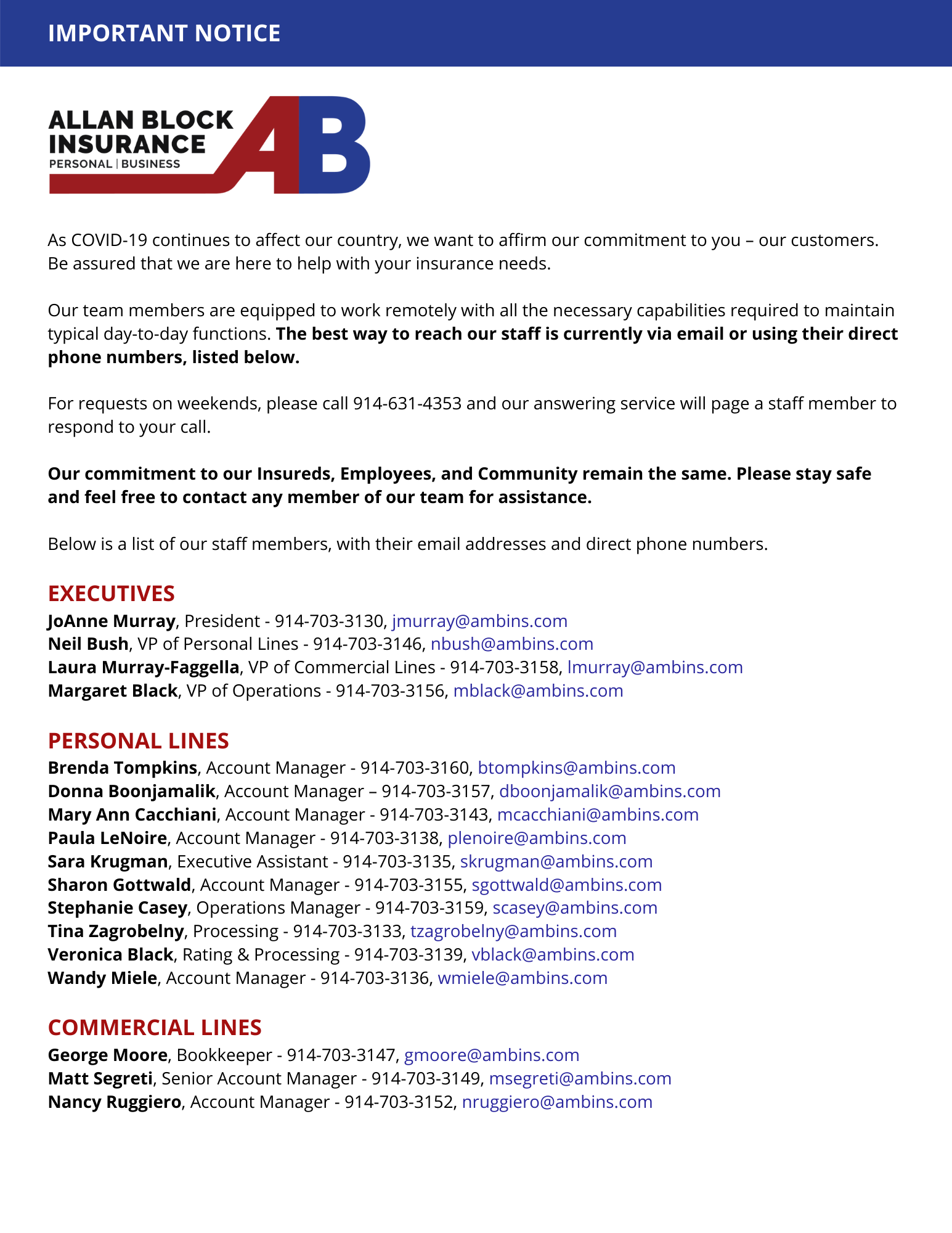Business auto insurance coverage can differ depending on the wording in the specific policy. However, there are traits common across most business auto insurance policies that every company should know about.
Named Insured, Permissive Use and Covered Auto A business auto policy is typically written in the name of the business entity (e.g., Bill Smith Plumbing), not in the name of an individual (e.g., Bill Smith). Coverage extends to individuals only if they are using a vehicle specifically insured under the policy with the permission of the business entity. Individuals, even those who own the business (e.g., Bill Smith, himself), should not expect to be protected by the policy
if using a vehicle that is not covered by the policy (e.g., Bill Smith’s personally-owned pickup).
Autos Not Owned by the Business The policy may cover claims caused by vehicles the business doesn’t own. For example, while returning to the office from a client meeting, an employee causes an accident in his personally-owned car. The business is brought into the liability claim and would have protection under its policy, provided it has bought coverage for a non-owned auto.
Vicarious Liability for Other Parties Most business auto policies extend coverage to other parties who share liability for an accident due to their relationship with the policyholder. For
example, a general contractor (GC) could be covered by a subcontractor’s business auto policy if the GC is brought into a liability claim after the sub’s employee causes an accident while leaving a jobsite.
Uncovered Injuries to Employees Caused by Another Employee
Imagine two employees—Jim and Bob—are traveling in a company vehicle together to a conference. Jim is driving like a maniac and causes an accident that injures Bob. Bob files a liability claim against their employer, who gave Jim permission to drive the company vehicle to the conference. The employer’s policy will not cover the claim, because it doesn’t insure claims between fellow employees.



